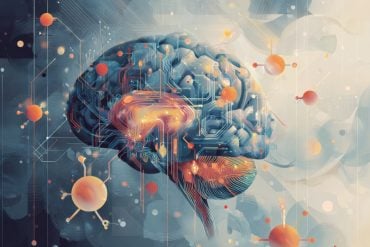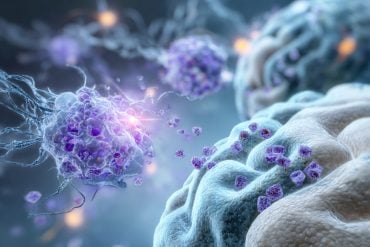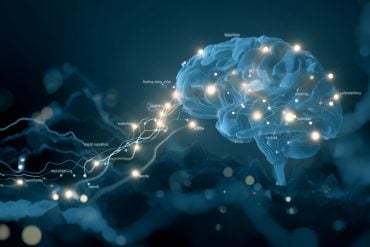Summary: Researchers made a new discovery about how we navigate our environments, pinpointing a brain cell mechanism crucial for spatial orientation. This research reveals that place cells in the hippocampus, essential for creating mental maps of our surroundings, activate and release endocannabinoids to communicate position information.
The study’s innovative use of molecular tools and live animal imaging provides unprecedented insight into the fast, specific signaling of these cells, challenging previous notions about the spread and speed of endocannabinoid signals. This breakthrough not only advances our understanding of basic navigation but also opens new avenues for addressing cognitive aspects of neurological disorders like epilepsy.
Key Facts:
- Place Cells and Endocannabinoids: Place cells in the hippocampus release endocannabinoids, signaling the brain’s location within an environment, a process now observed in active animals.
- Fast and Specific Signaling: Contrary to prior beliefs, the study shows endocannabinoid signals are rapid and cell-specific, vital for encoding spatial information.
- Implications for Neurological Disorders: Understanding endocannabinoid signaling in spatial orientation could lead to new strategies for managing cognitive issues in conditions such as epilepsy.
Source: Baylor College of Medicine
When you walk into your kitchen in the morning, you easily orient yourself. To make coffee, you approach a specific location. Maybe you step into the pantry to grab a quick breakfast and then head to your car to drive to your workplace.
How these apparently simple tasks happen is of major interest to neuroscientists at Baylor College of Medicine, Stanford University and collaborating institutions.
Their work, published in the journal Science, has significantly improved our understanding of how this occurs by revealing a mechanism at the brain cell level that mediates how an animal moves about in the environment.

“It’s been known that animals and people can find their way in the environment thanks to the hippocampus, a brain region that forms a representation, a sort of a map of the environment that lets us know where we are,” said co-first author Dr. Barna Dudok, assistant professor of neurology and a McNair Scholar at Baylor. Dudok also is co-corresponding author of this work.
Numerous brain cells or neurons in the hippocampus work together to create the map of a particular environment, say the kitchen in your home. Scientists know that each of these neurons, called place cells, becomes activated only in a specific place in the environment. For instance, the location of the coffee pot activates one place cell, and the pantry activates another.
“Place cells help a person know where he or she is,” Dudok said.
“When a person walks through a particular area of the environment, specific place cells are activated and others will activate when the person moves to a different area. In the current study, we worked with mice and showed what happens at the neuronal level when an animal is orienting itself in the environment. Specifically, we demonstrate a role for the molecular messengers called endocannabinoids in the activity of place cells.”
When place cells in the hippocampus become activated, they release endocannabinoids, which are lipids, fat-like molecules that mediate communication between one neuron and the next.
“Until now, all the details of how endocannabinoids work have been described in brain slices. In this study, we had for the first time the methods to record these signals at high resolution in a living animal,” Dudok said.
The researchers used a molecular tool that turns endocannabinoid signals into fluorescence and a microscope to image the brain of a mouse as it was running on a treadmill.
“It was very rewarding to me when I analyzed those images and realized that there are endocannabinoid signals that I can detect that change when a mouse moves in the environment,” Dudok said.
“I have been studying this pathway for a long time and it always was something we can pick up on brain slices. To actually see it happening in the brain of an active animal was very exciting.”
Surprisingly, activated single place cells release endocannabinoids and the signals go away in a matter of seconds.
“Before, people suspected that this would be a slow signal that spreads to various cells, but it seems that it is a fast signal that is very specific to individual cells and contributes to its ability to encode information about the animal’s location,” Dudok said.
Supporting the importance of endocannabinoid signaling in animal orientation, the researchers found that disrupting the mechanism by eliminating the endocannabinoid receptor in neurons also disrupted the circuit in the hippocampus that helps the animal know its location, and consequently the hippocampus forms a less accurate map.
This work also has implications for human neurological disorders.
“Our group and others showed earlier that epileptic seizures trigger the release of endocannabinoids. We would like to understand if this contributes to memory problems of people with epilepsy,” Dudok said.
“This could lead to ways to prevent or revert the reorganization of the endocannabinoid signaling pathway in epilepsy and potentially improve cognitive comorbidities in this condition.”
Co-first author Linlin Z. Fan, Jordan S. Farrell, Shreya Malhotra, Jesslyn Homidan, Doo Kyung Kim, Celestine Wenardy, Charu Ramakrishnan, Yulong Li, Karl Deisseroth and Ivan Soltesz also contributed to this work. The authors are affiliated with one or more of the following institutions: Baylor College of Medicine, Stanford University, Boston Children’s Hospital, Harvard Medical School, Peking University and Howard Hughes Medical Institute.
Funding: This research was supported by the National Institute of Neurological Disorders and Stroke of the National Institutes of Health. Dudok is a McNair Scholar supported by the McNair Medical Institute at The Robert and Janice McNair Foundation.
About this navigation and neuroscience research news
Author: Graciela Gutierrez
Source: Baylor College of Medicine
Contact: Graciela Gutierrez – Baylor College of Medicine
Image: The image is credited to Neuroscience News
Original Research: Closed access.
“Retrograde endocannabinoid signaling at inhibitory synapses in vivo” by Barna Dudok et al. Science
Abstract
Retrograde endocannabinoid signaling at inhibitory synapses in vivo
Endocannabinoid (eCB)–mediated suppression of inhibitory synapses has been hypothesized, but this has not yet been demonstrated to occur in vivo because of the difficulty in tracking eCB dynamics and synaptic plasticity during behavior.
In mice navigating a linear track, we observed location-specific eCB signaling in hippocampal CA1 place cells, and this was detected both in the postsynaptic membrane and the presynaptic inhibitory axons. All-optical in vivo investigation of synaptic responses revealed that postsynaptic depolarization was followed by a suppression of inhibitory synaptic potentials.
Furthermore, interneuron-specific cannabinoid receptor deletion altered place cell tuning. Therefore, rapid, postsynaptic, activity-dependent eCB signaling modulates inhibitory synapses on a timescale of seconds during behavior.







